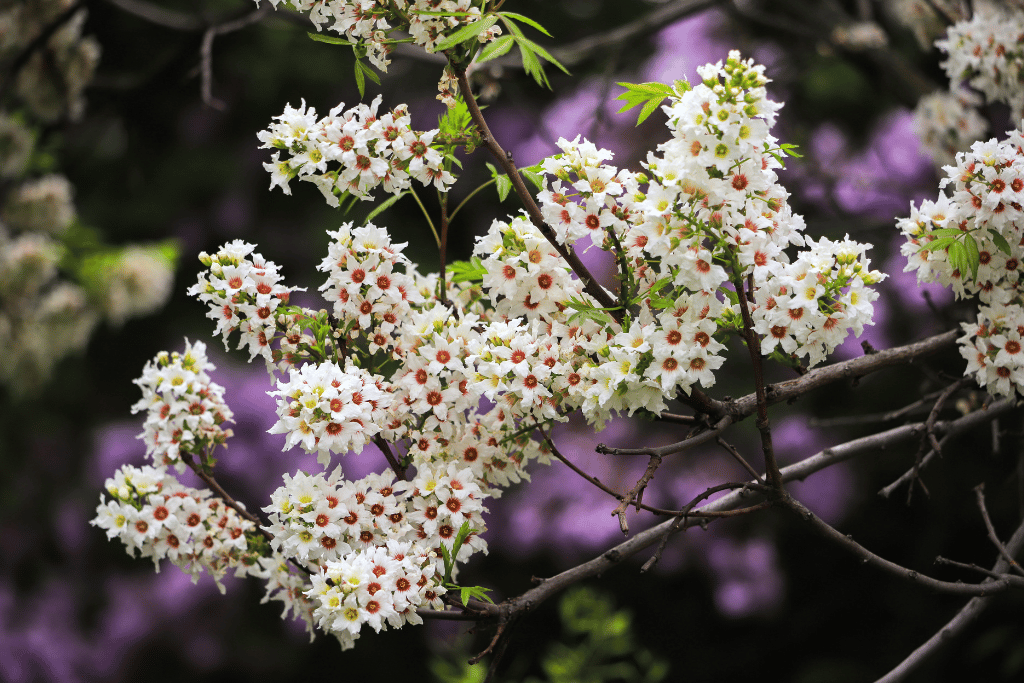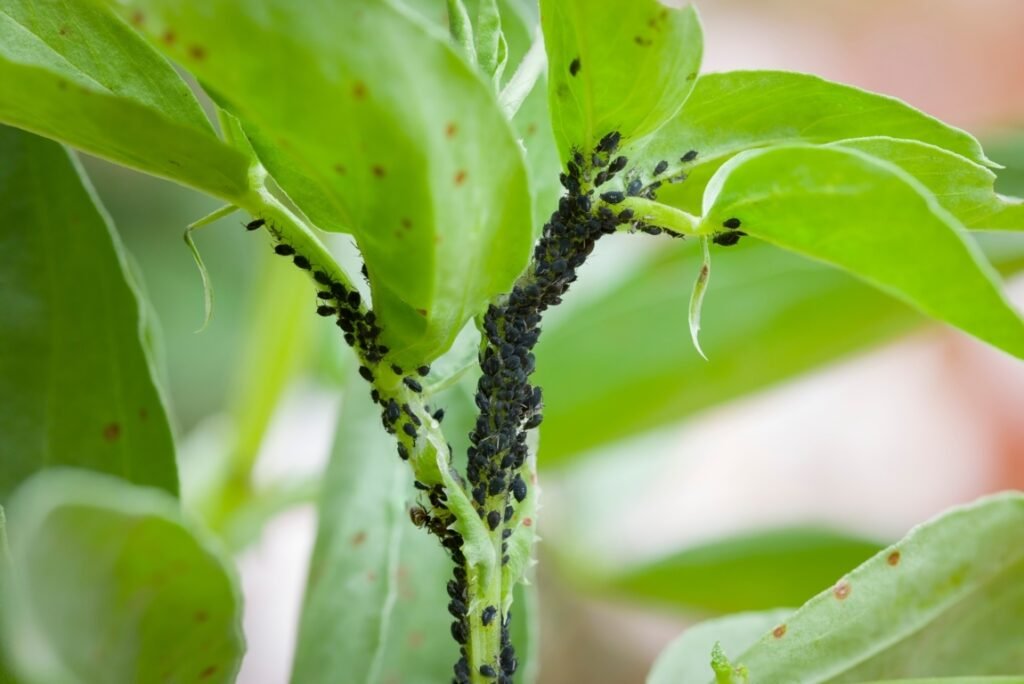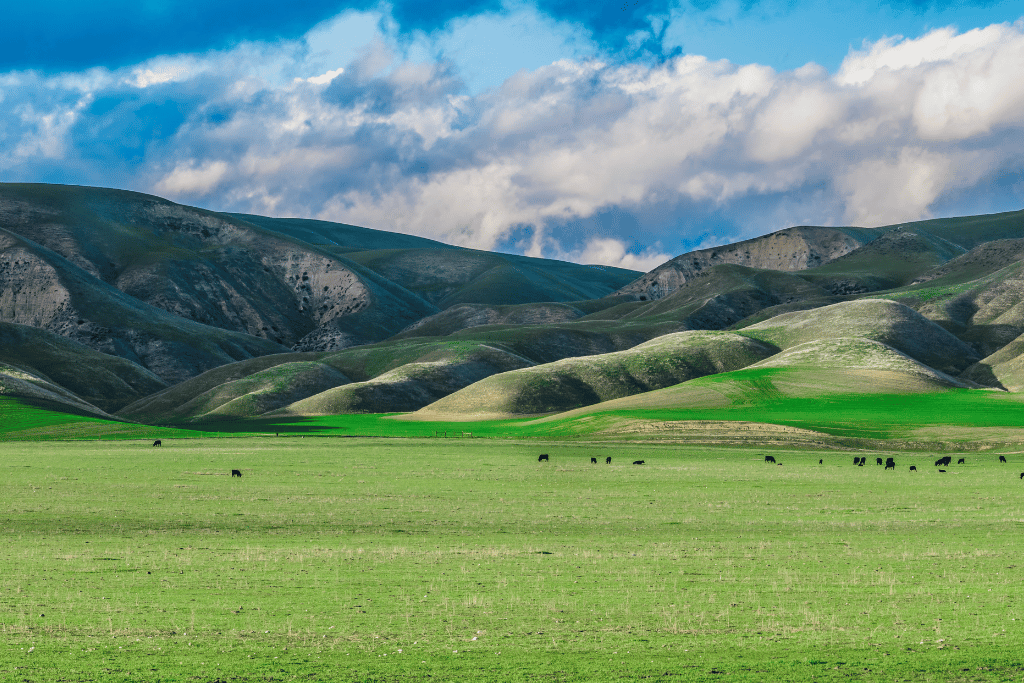
Having lived in California for four years and traveling the entire state extensively, I can comfortably declare that California is the most diverse state in the country.
The southern coastal regions of San Diego and Los Angeles are basically seaside paradises. Inland, to the east of these dream destinations is the absolute opposite, inhospitable desert.
Traveling north, you encounter beautiful, lush dense redwood forests. The rocky granite Sierra Mountain Range divides the state into coastal and central valley regions, forming the breathtaking rock walls and stunning natural beauty of Yosemite National Park.
Continuing northward, the terrain gets mountainous, forested and rugged. Yet when you travel west out to the coast, the climate resembles a more cool, damp pacific northwest rainforest feel.
And that’s just scratching the surface of the geological features and microclimates California offers.
With this much diversity in climate and topography, we can imagine the wide variety of plant species that must exist. There is no exception for types of grasses that will thrive in these various conditions.
It’s easy to take grass for granted, but it’s a vital component of the landscape when considering specific activities and lifestyles.
Read on to find out more about the multitude of grass types, what they’re used for, under what conditions they grow well and where in California you’ll find them.
Types of Grass in California
Different types of grass will grow better than others, given the temperature, annual precipitation and the change of the seasons. This is a complete list of grasses that are typically cultivated in California, along with their characteristics.
Fescue
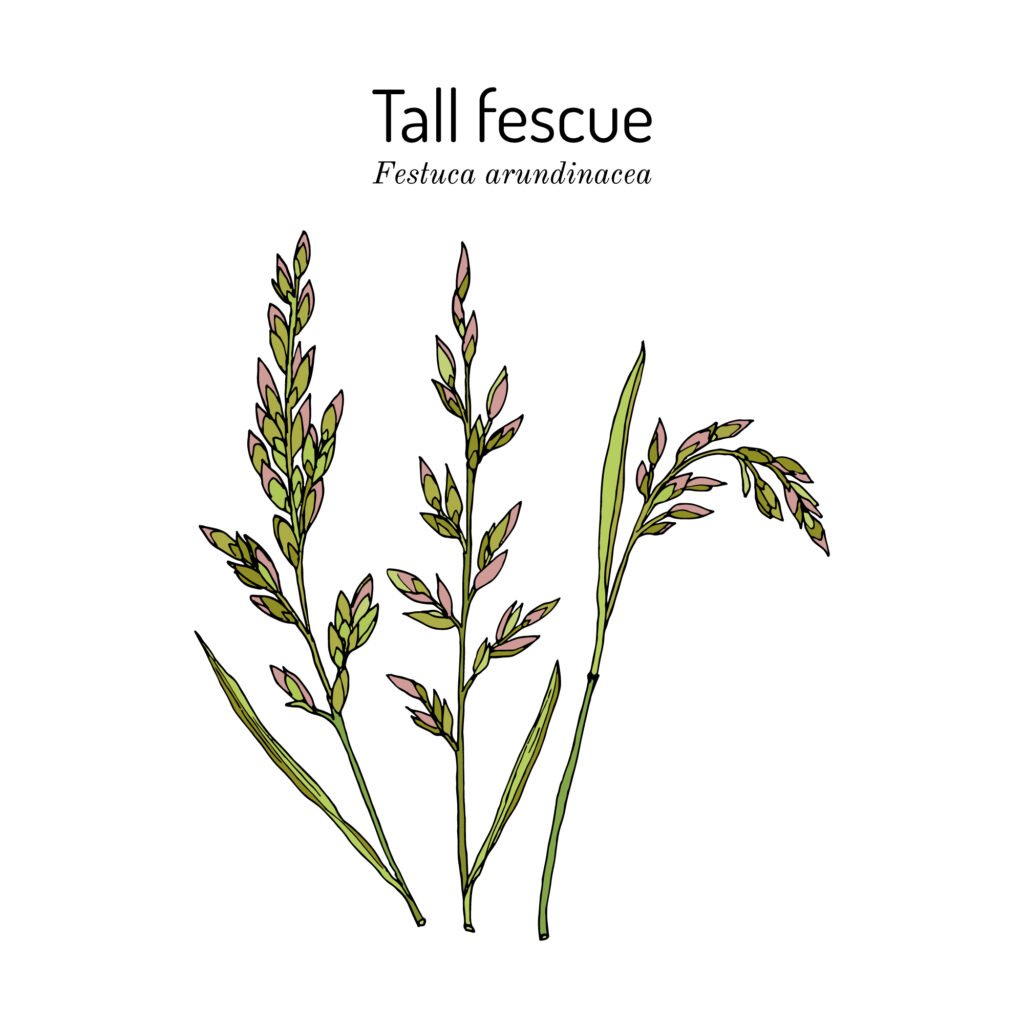
Fescues fall under the category of cool-season grasses. It is popularly grown by homeowners for its cold, heat and drought tolerance. Typically grown in northern regions of the country, it grows well in areas that have both a warm and cold season.
In general, fescue grasses are low-maintenance; they grow in bunches but rarely require dethatching. Thatch is a mat layer of grass stems and roots that accumulates quicker than it can break down. When it becomes too thick, it can threaten the health of a lawn. Unlike some other grass varieties, fescues don’t usually run into this issue.
Fescue varieties have deep roots that efficiently absorb nutrients from the soil, so they don’t require as much fertilizer as other cool-season grasses.
Advantages of Fescue Grass
- Winter maintenance is not necessary.
- Holds up exceptionally well to foot traffic and other wear and tear.
- Thatching does not become a problem.
Disadvantages of Fescue Grass
- Develops brown spots during extended hot seasons.
- Overseeding may be required due to summer die-off.
Varieties of Fescue Grass
- Tall Fescue Grass – Used in sports fields and commercial areas for its durability and shade tolerance. Deep roots help tall fescue withstand periods of drought.
- Hard Fescue Grass – Common in golf course roughs, hard fescue is also blended with other varieties to increase fertility and decrease the necessity of mowing.
- Creeping Red Fescue – Has a deep green color and fine blades, often blended in with other grass types.
- Sheep Fescue Grass – Improves soil conditions and is used to prevent erosion.
- Chewings Fescue Grass – Fine blades grow well in northern regions and is drought tolerant.
Bluegrass
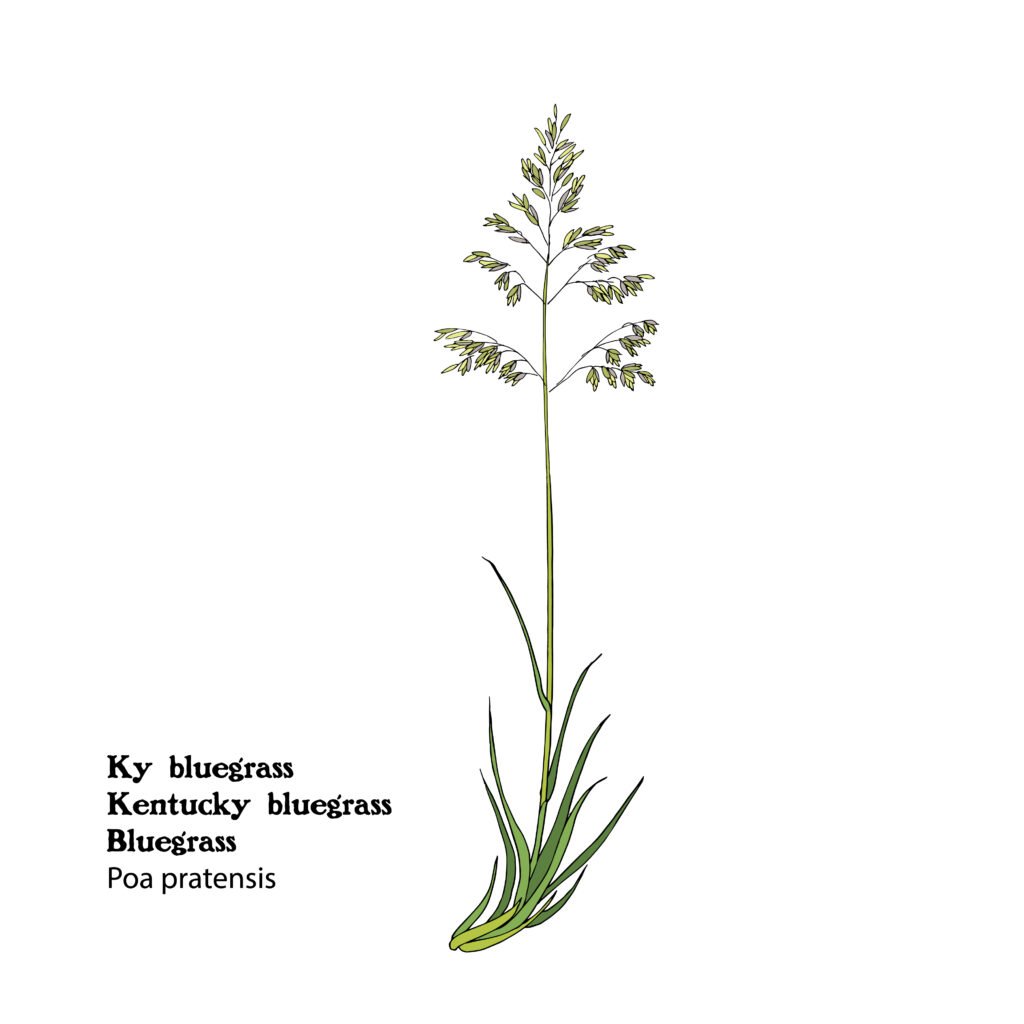
Bluegrass is the largest genus in the grass family (Poaceae) with more than 500 species. Native to temperate and tropical regions, this type of grass is used for lawns, pastures, forage grass and some are even ornamentals.
They are fine-bladed annuals or perennials. The most popular and widely used for lawns and pastures in North America is Kentucky bluegrass.
Kentucky Bluegrass
As a native of Eurasia, Kentucky bluegrass is often mixed with other cool-season grasses. It is adored for its good looks and ability to withstand and recover from foot traffic.
Kentucky bluegrass grows best in full sun and deep, rich soils. It can be finicky, requiring just the right conditions, which is why it is rarely grown without being mixed with another variety of grass.
Advantages of Kentucky Bluegrass
- The soft blades cut cleanly.
- Tolerates the cold better than fescues or ryegrasses.
- Resists disease when well maintained.
- Goes dormant during periods of drought.
- Different cultivars have varying growing preferences, so it’s easy to find a suitable variety.
- Rhizomatic roots grow aggressively, helping the grass recover from heavy traffic.
- The grass looks nice and is soft, pleasant to the eyes and feet.
Disadvantages of Kentucky Bluegrass
- Requires a lot of water.
- Has a shallow root system.
- Doesn’t tolerate shade.
- Can be prone to thatch, insects and disease.
Ryegrass
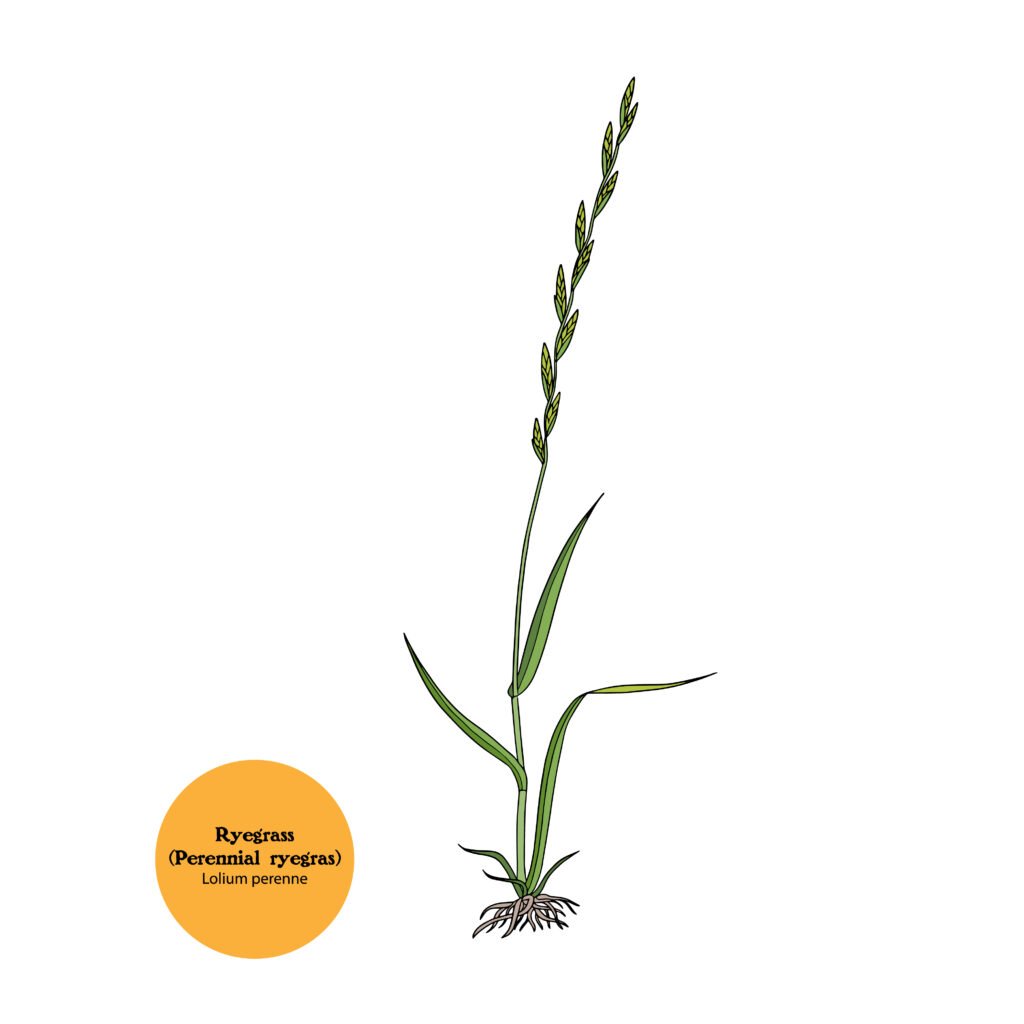
Often overshadowed by fescues and Kentucky bluegrass, perennial ryegrass is an excellent addition to lawn seed mixes.
Advantages of Ryegrass
- Seeds germinate very quickly, in as little as 21 days seeds are sown and grow to a mowable height.
- Is often referred to as a nurse grass because in seed blends it germinates quickly, protecting and shading slower sprouting varieties.
- Can be grown by itself as a lawn due to its hardiness, disease and insect resistance and low maintenance requirements.
- The pale green color of the blades is aesthetically pleasing, evidenced by the fact it’s the primary species used at Augusta National Golf Club and Wimbledon Tennis Club.
- The perfect variety for reestablishing damaged areas and preventing erosion.
Disadvantages of Ryegrass
- It does not spread through rhizomes (underground stems) or stolons (above-ground stems) like other grasses.
- The inconsistent growing habit leads to bunches, patches and bare spots and needs to be reseeded regularly.
- Needs a sunny location to truly thrive.
- Has a rough texture that doesn’t always cut cleanly.
- May not survive extremely cold winters of northern regions.
Bermuda Grass
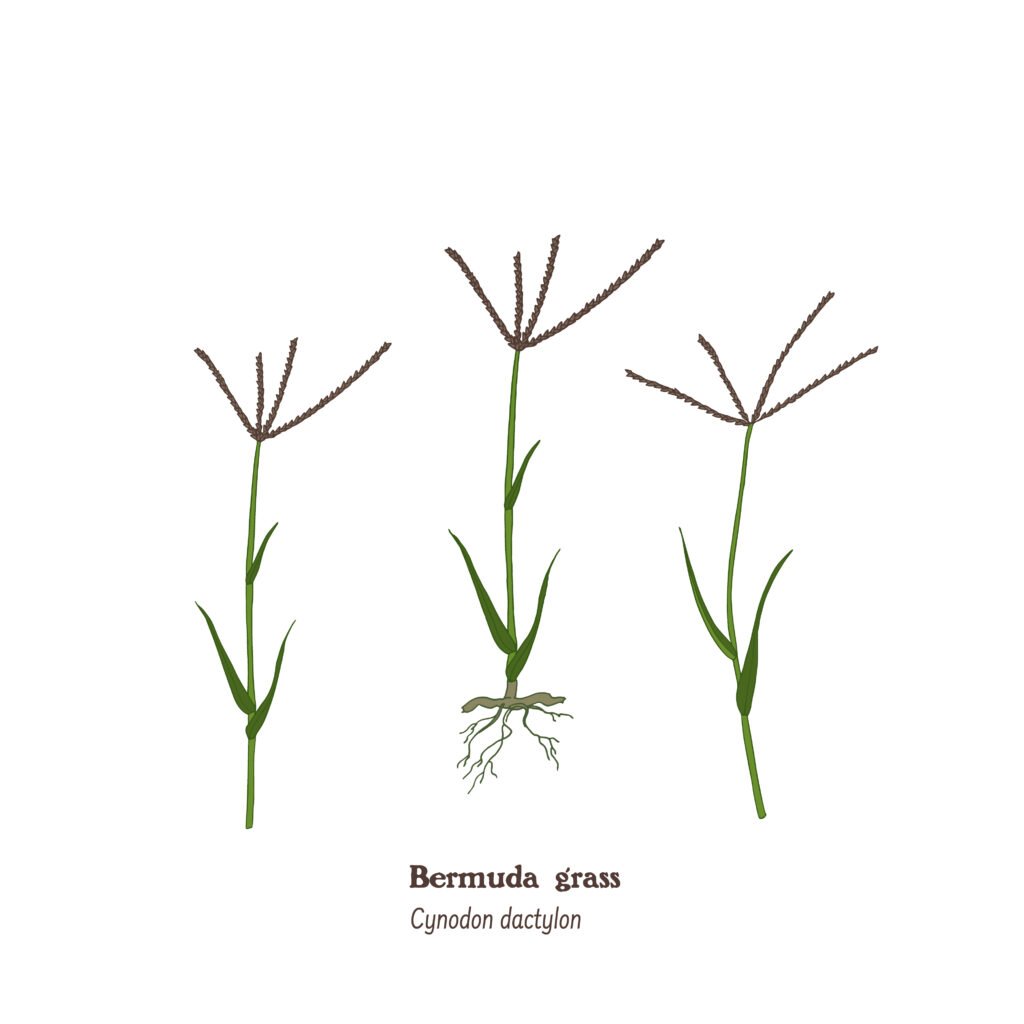
The warm-season turf was brought to the Americas from Africa by the Spanish. Also known as “South Grass” it is commonly used for lawns, pastures, sports fields, golf courses and parks.
Bermuda grass is cold tolerant to a degree but prefers tropical climates that stay above 60 degrees, where it will remain green year-round.
Advantages of Bermuda Grass
- Has supreme tolerance to heat, humidity, drought and salt.
- Roots can grow six feet deep, making it more resilient than other warm-season grasses.
- Has the fastest growth rate of other warm-season grasses, spreading by stolon and rhizome.
- Keeps its green color all year long in frost-free climates.
- Can be started from seed.
- Recovers very quickly from damage; ideal for athletic fields, golf course tee boxes and fairways.
Disadvantages of Bermuda Grass
- More sensitive to cold temperatures than other warm-season grasses.
- Needs full sun and excellent drainage.
- Spreads very quickly and is difficult to contain and may take over lawns.
- Goes dormant and turns brown during cold winters.
Read about Best Lawn Mower for Bermuda Grass.
Finding the Best Lawn Mower for Bermuda Grass in 2024
Bentgrass
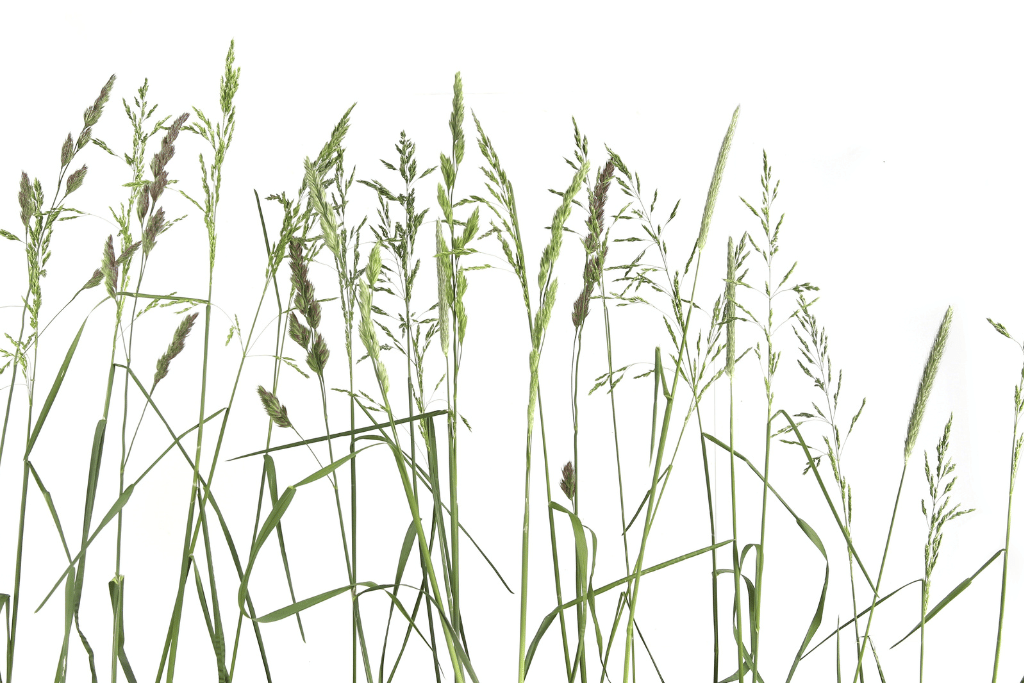
A cool-season grass that grows especially well in New England and the Pacific Northwest, bentgrass spreads by stolons and rhizomes and is commonly used for turfgrass.
Advantages of Bentgrass
- Blades are an attractive blue-green hue.
- Resilient as a turfgrass, withstanding foot traffic and constant mowing.
- Some varieties are used in seed mixes for planting in southern regions.
- Prefers cool evenings and tolerates cold climates well.
- Grows well as a low-maintenance lawn in cooler regions.
Disadvantages of Bentgrass
- Is mostly treated as an invading weed in southern regions.
- Needs cool evenings to thrive.
- Requires constant watering, fertilizing, mowing and pest management in southern regions.
Varieties of Bentgrass
- Northern Varieties – Toronto, Nimisiila, Cohansey, Congressional
- Southern Varieties – Emerald, Cato, Penn Links, Crenshaw, Penneagle
Buffalo Grass
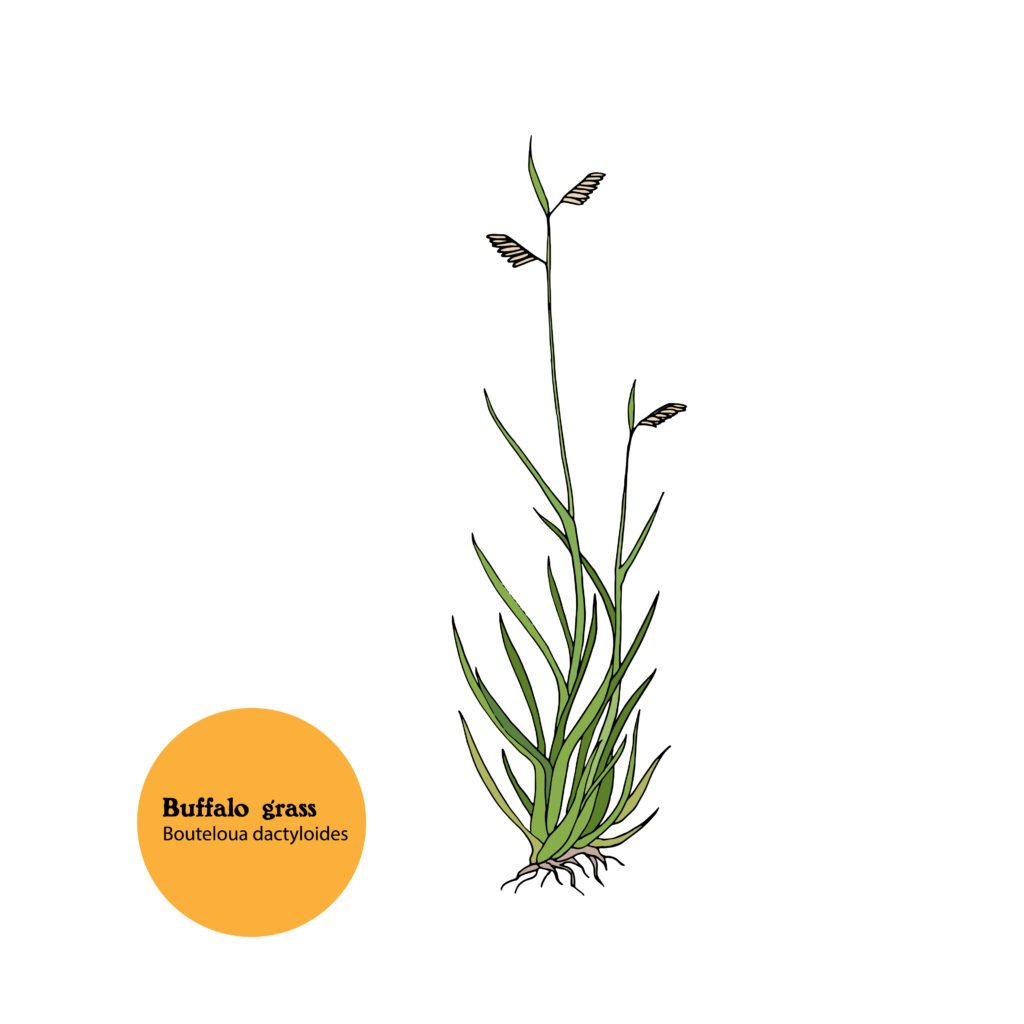
The North American native grass grows wild and abundant out west and in the prairies of the Great Plains. Despite its wild nature, buffalo grass has come to be a popular choice for lawns in certain areas. Because it’s a native plant, it is a well-adapted and generally low-maintenance option.
Advantages of Buffalograss
- The only native grass that can be used for lawns.
- Can be established in a few ways; sprouting seeds or purchasing it as sod or plugs.
- Barely requires water once it’s established.
- Fertilizer isn’t a necessity when it’s established.
- Grass is soft and lush under the feet.
- Doesn’t have issues with disease or insects.
- Has better cold tolerance than other warm-season grasses.
- Doesn’t require frequent mowing.
Disadvantages of Buffalograss
- Grows openly, leaving space for weeds to move in
- Seeds are expensive and can be challenging to establish.
- Not a fire-safe grass.
Zoysia Grass
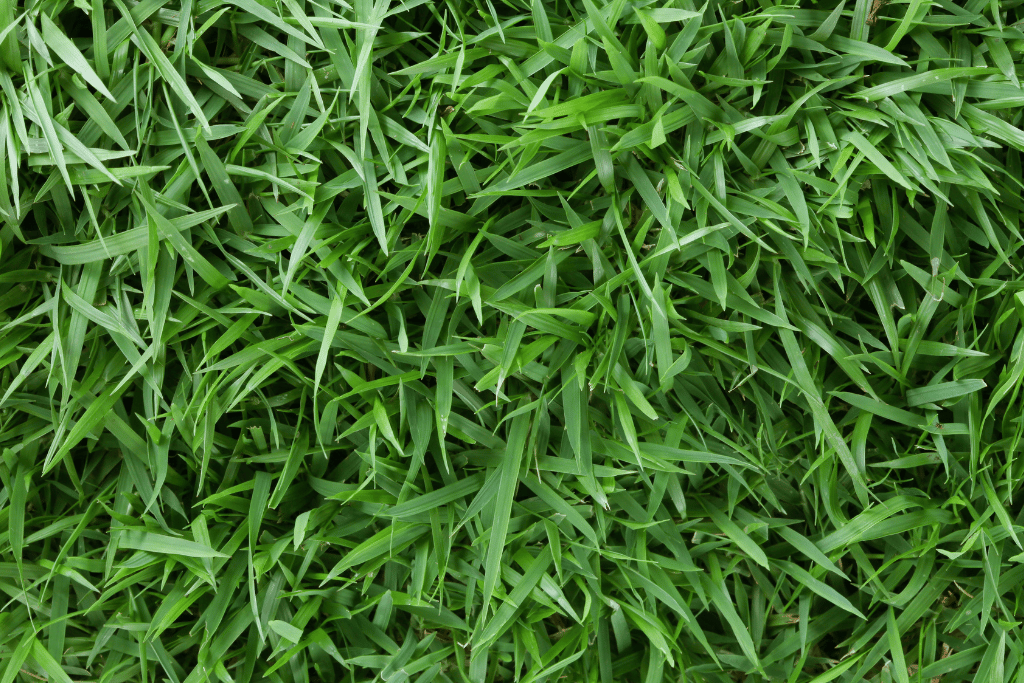
A popular turfgrass in the southern states of the US, Zoysia grass originates from Asia and is available in many different varieties.
The warm-season grass made its way to the US in the late 1800s. Turf breeders worked with the grass, adapting it for warm-season and transitional zone lawns.
Zoysia Grass is dense, durable and more tolerant of extreme heat and cold than other grass types. Zoysia japonica, Zoysia matrella and Zoysia pacifica are the most common species of Zoysia grass.
Advantages of Zoysia Grass
- Does a great job of crowding out weeds.
- Will tolerate light shade.
- Has a strong tolerance for salty, coastal regions.
- A supremely soft grass, pleasantly comfortable to walk on barefoot.
- Will grow well in all soil types.
- Holds up well to heavy foot traffic.
- Cold tolerant, drought tolerant and works well in the transition zone where warm-season and cold-season grasses tend to fail because of extreme temperatures.
- Can be either low or high-maintenance turf.
Disadvantages of Zoysia Grass
- One of the slowest growing grasses.
- Due to the slow growth of seeds and plugs, sod is recommended.
- So, it can be expensive to get it established.
- Turns brown during times of drought.
- Thatch can become a problem because of the density of the grass.
Read about Best Lawn Mower for Zoysia Grass.
Cutting Edge Solutions: The Best Lawn Mower for Zoysia Grass
Bahia grass
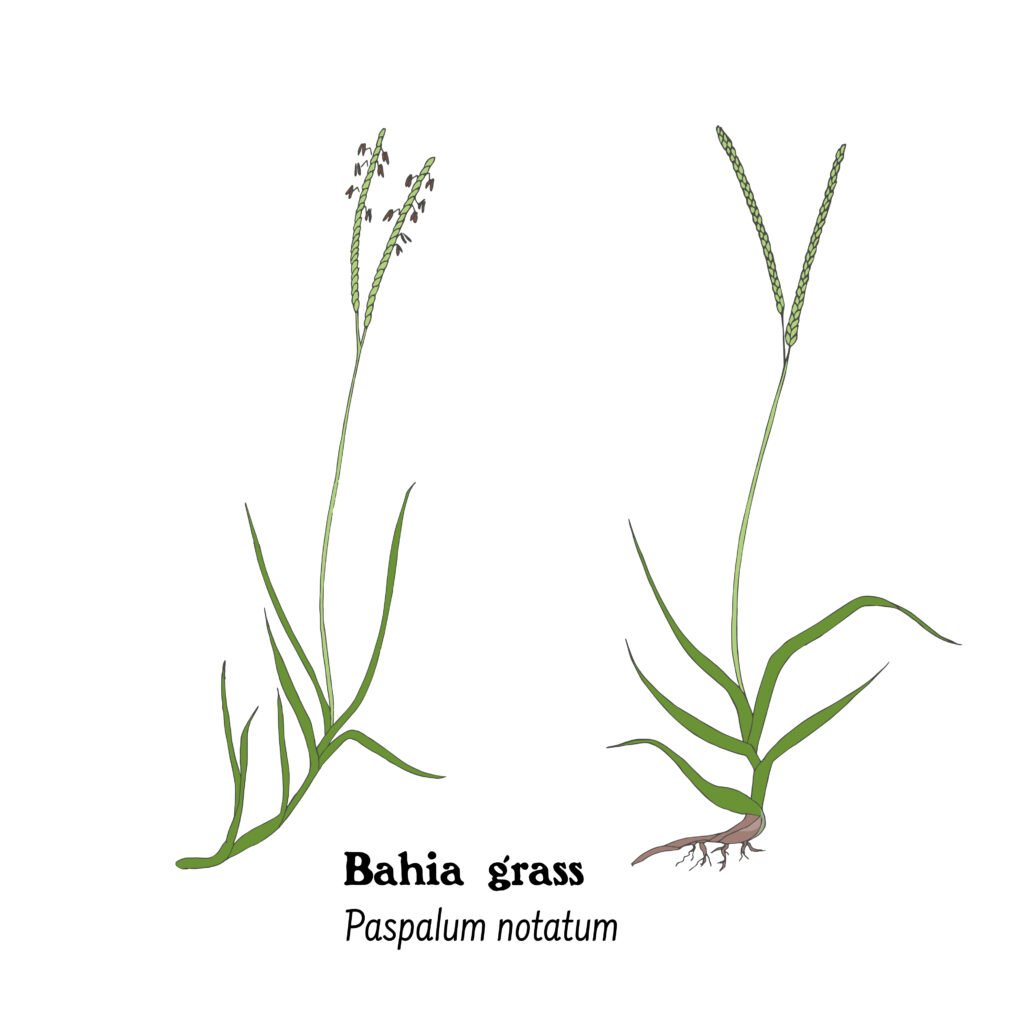
Used mostly in pastures, bahia grass has become a popular choice for lawns in warm coastal regions. It is low maintenance, deals well with infertile soils and is perfect for extensive acreage plantings.
Advantages of Bahia grass
- Requires little water and fertilizer.
- Grows deep roots.
- Acts as a low-maintenance ground cover over large areas.
- Grows well in sandy and infertile soils.
- Doesn’t have problems with disease or insects.
- Doesn’t thatch.
- Can be established from seed or sod.
Disadvantages of Bahia grass
- Seedheads develop quickly, which necessitates frequent mowing.
- Doesn’t grow into a dense mat of grass.
- Open growth habit makes it susceptible to weeds.
- There aren’t many varieties to choose from.
St. Augustine
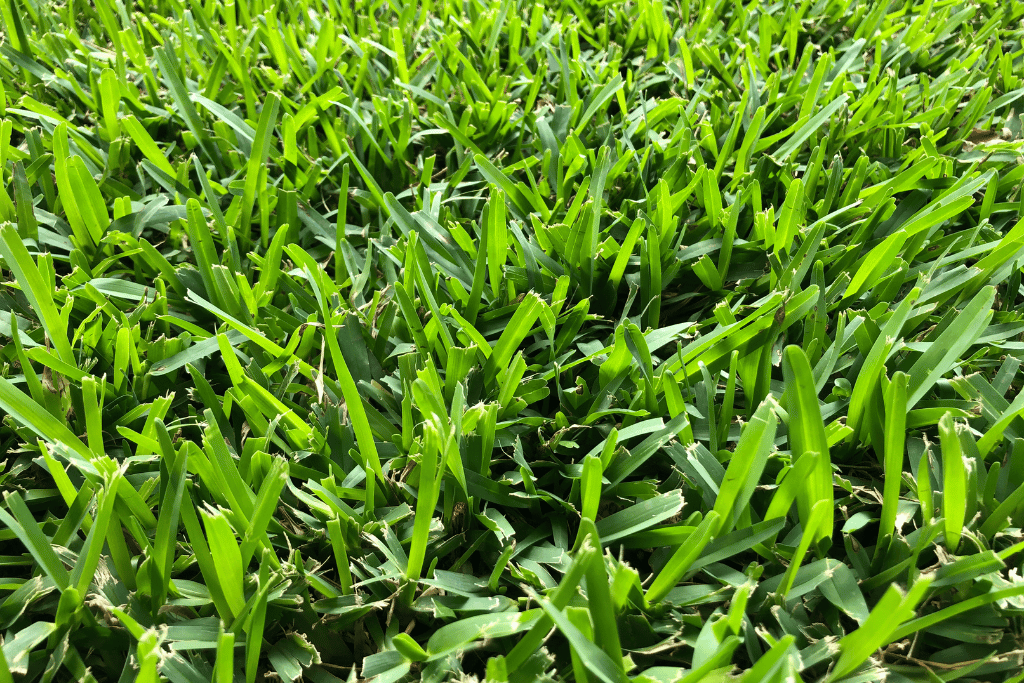
Perfect for coastal, subtropical regions, St. Augustine produces thick blades that are both beautiful and shade tolerant.
Popularly grown as a lawn in all of the southern states, this heat-loving grass, when properly maintained, beautifies landscapes and homes.
Advantages of St. Augustine Grass
- Loves heat but will tolerate shade better than any other warm-season grass.
- Grows very quickly.
- High salt tolerance, does well in coastal regions.
- Produces one of the thickest blades of grass.
- Crowds out most weeds.
- Can be planted as sod, plugs or sprigs.
Disadvantages of St. Augustine Grass
- Needs frequent mowing.
- Can only be grown in temperate regions, doesn’t tolerate cold.
- Can’t be planted from seed.
- Doesn’t have a dense growing habit.
- Vulnerable to fungal diseases and chinch bugs.
Read about Best Lawn Mover for St. Augustine Grass.
Best Lawn Mower For St. Augustine Grass
Who knew there were so many types of grass to consider!
And they can all be grown, to some extent in California.
Now we’re going to cover the state from south to north and specifically explain which types of grasses fit into each region and microclimate.
Best Types of Grass for Southern California
One of the most desirable climates in the world is that of southern California. Well, not all of southern California, which boasts record-high temperatures in some of the driest deserts.
Given the major swing of pleasantly warm year-round climates on the coast to the deadly weather extremes of the central valley and desert, let’s take a close look at the appropriate types of grass to grow in southern California.
Zoysia Grass
The most heat tolerant of all grasses would be a good fit for any region of southern California. Zoysia grass grows very slowly which helps it stand up to intense heat and drought.
Due to its slow growth, zoysia grass isn’t tolerant of much foot traffic; it can’t quickly recover from it. Otherwise, it is commonly planted in low-traffic spaces for its dark green color and minimal maintenance requirements.
Bermuda Grass
There is a multitude of varieties of Bermuda grass suited to all types of soil. They hold up well to full sun, drought and foot traffic.
Bermuda grass has the fastest growth rate of all warm-season grasses and is recommended for high-traffic areas like sports fields and golf courses. They are easy to establish from seed and will grow and recover quickly, appropriate for most regions in southern California.
Bahia Grass
Bahia grass is perfectly acclimated to California due to its extreme drought tolerance. It sends down profoundly deep roots that access water and nutrients well out of the reach of any other plant.
Bahia grass tolerates poor soil and full sun while also helping to prevent erosion, which can be beneficial in coastal regions.
St. Augustine
Thick leaves and an attractive blue-green tinge makes St. Augustine a desired type of grass to grow in lawns, as long as foot traffic isn’t too frequent. Perfect for coastal properties, St. Augustine is resilient to the salty air and tolerates part shade conditions better than other warm-season grasses.
Best Types of Grass for Northern California
In northern California, typically recognized as everything north of the San Francisco Bay area, cool-season grasses are commonly grown. However, some warm-season grasses have been found to be appropriate for specific regions. Let’s talk about the best types of grass to grow in the northern part of the golden state.
Bluegrass
Kentucky bluegrass and Four-Way bluegrass are two popular varieties to grow in northern California.
It’s typical to see the cool-season turfgrass included in seed blends. It looks wonderful and is a terrific type of grass for parks, sports fields, and residential and commercial spaces.
Bluegrass recovers quickly after wear and tear, is disease resistant and tolerates drought and shade both reasonably well.
Its most notable feature for northern regions is that it keeps a nice color through cold winters.
Tall Fescue
Another standard type of grass found in seed blends is tall fescue. It is a highly durable cool-season turfgrass that tolerates drought and foot traffic exceptionally well.
Commonly used for roadsides, parks, sports fields and residential and commercial spaces, it’s difficult to go wrong with disease-resistant tall fescue.
Native Bentgrass
Bentgrass is native to California and can be cultivated effectively in the northern part of the state. It adapts well to environmental conditions, but it’s especially suited for the dry, mountainous regions and the sun-soaked central valley due to its outstanding drought tolerance.
The slow-growing, cool-season native bentgrass is widely used on golf courses and residential and commercial spaces but doesn’t offer much for winter color.
Bermuda Grass
Many varieties of the warm-season turfgrass are cultivated in northern California. The low-maintenance Bermuda grass is frequently planted in parks, golf courses, sports fields and residential and commercial properties.
It is not finicky at all and will withstand high traffic, drought conditions and disease. Full sun is recommended and you shouldn’t have high expectations for winter color, especially where the cold season is harsh.
Ryegrass
Perennial ryegrass is commonly seen around northern California. It’s usually included in seed mixes with bluegrass or fescue to support fast growth and cold hardiness.
Perennial ryegrass is planted in sports fields and residential and commercial properties but isn’t particularly resistant to foot traffic or shade, which is why it’s typically found in seed blends. However, it holds up well to cold winters, retaining its emerald green color.
Final Thoughts
Although California may be notorious for another, stronger-smelling type of grass, it doesn’t mean we should overlook the importance of choosing the right type of underfoot greenery for planting in particular regions and for specific purposes.
There are thousands of species of grass in the world, and listed above are all the varieties that are the most fitting for cultivation in California.


